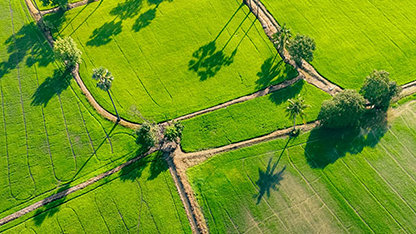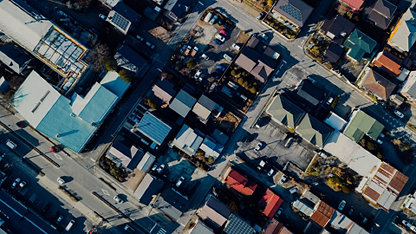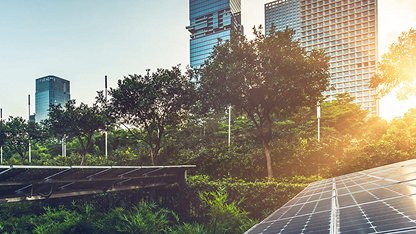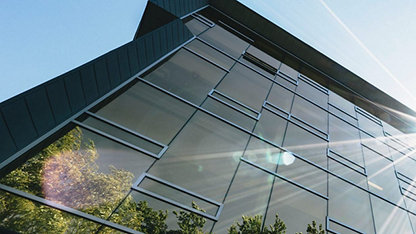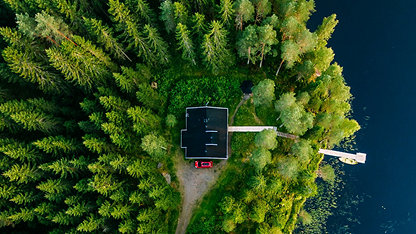Protecting wildlife for the future will also benefit developers and homeowners, argues Rachel Hackett of The Wildlife Trusts.
The government has an ambition to build one million new homes in the UK by the end of 2020, and a further half a million by the end of 2022.
It has also committed to making ours the first generation to leave our environment in a better state than we found it. However, this will be a major task: over the past century we have lost natural habitats on an unprecedented scale.
At The Wildlife Trusts, our vision is for beautiful and inspiring new homes that allow both people and nature to thrive. This means focusing on where and how we build houses, not just how many we need to build. The starting point must be mapping our woods, meadows, parks and river corridors, and identifying where new habitats are needed. Then we can locate and design new housing around this.

Deer in the Scottish Highlands: estates are open to more wooded areas in traditionally managed “treeless” deer forests
The trusts’ proposals are built on decades of experience of working with local authority planners, housing developers and policymakers. Every year, The Wildlife Trusts influence thousands of planning applications and the design and construction of new developments, such as Cambourne in Cambridgeshire and Woodberry Wetlands in London, so they benefit both wildlife and people.
The challenge
Increasing numbers of people have little or no contact with nature. This disconnect affects mental health, contributes to obesity and affects life expectancy. Integrating nature into the built environment can help to address these problems, but developments have often missed opportunities to do so and have damaged the existing environment.
Since 1930, England and Wales have lost 97% of their lowland meadows. Over the past 50 years, 56% of our wild plants and animals have declined in number, with 15% at risk of disappearing altogether. Much of this loss has been due to intensive agriculture, but built development continues to be a major contributor. This has reduced the space left for wildlife and disrupted ecological processes, such as natural floodwater storage in river flood plains.
As farmland has become less hospitable to wildlife, so the importance of our urban natural areas has increased. Yet in towns and cities, many gardens and small incidental natural spaces have been converted into buildings and hardstanding, leading to creeping but large-scale reductions in the natural character of many urban landscapes. Continuing development in this way but on a bigger scale is not sustainable for wildlife, wild places, the character of neighbourhoods and the people who live there.
A positive alternative
Built in the right way and place, new housing developments can contribute to nature and the health and wellbeing of people who live there. There are two stages to this:
- The developments should be in areas already well served by infrastructure, avoiding damaging existing environmental assets. Housing should be targeted at places where it can have a positive environmental impact, to help landscape restoration and recovery. This requires an up-to-date, well-informed ecological network map that identifies existing natural features and habitats and areas where new ones are needed to restore ecosystems and help wildlife recover.
- The developments and houses should be designed to integrate space for both wildlife and people, reduce carbon emissions and minimise water usage.
“Since 1930, England and Wales have lost 97% of their lowland meadows. Over the past 50 years, 56% of our wild plants and animals have declined in number, with 15% at risk of disappearing altogether. ”
A good, nature-friendly development retains existing meadows, wetlands, hedgerows, trees and woods, joining them up with wildlife-rich gardens, verges, green amenity space, cycle paths and walkways. The result is a network of natural green and blue corridors weaving through a development and into the surrounding urban or rural landscape, contributing to the wider ecological network. This improves air quality, reduces surface water flooding and makes developments greener and more attractive.
The benefits are clear:
- all new developments can make a positive, demonstrable contribution to nature’s recovery
- trees in urban areas improve the view, ensure privacy, provide shade and reduce pollution and flash flooding
- natural green spaces and trees in urban areas help stabilise temperature and reduce pollution
- community green spaces bring people together
- people experience the joy of wildlife and wild places in their daily lives
- local parks and woods where people can walk, play and unwind
- green spaces, watercourses, sustainable urban drainage, green roofs, trees, woodlands wetlands and other natural features provide effective water management, pollution and climate control
- reduced carbon emissions, pollutants and water use will help minimise environmental damage and threats to wildlife
- health, wellbeing and quality of life are improved for people who are living and working nearby
- when communities get involved in the planning and management of natural green space where they live, it can provide jobs, employment and volunteering opportunities
- natural green space in and around housing areas provide opportunities to grow food and even keep bees
- high-quality developments rich in natural green space can attract further investment from business and visitors
- houses and developments set in natural green space are more desirable to buyers and can have a higher market value.
Building with wildlife in mind
Local wildlife sites and those of national and international importance should be protected, enhanced and well managed as part of the development. The development should generate additional funding and resources – for example, section 106 agreements and conservation covenants – to allow an overall increase in the abundance and diversity of wildlife by habitat creation and restoration, and improve soil and river catchment health. Buildings should be more wildlife-friendly, with bird and bat boxes, pollinator- and insect-friendly structures, and connected spaces for hedgehogs.
“Maintaining local green spaces should be as essential for everyone involved in a housing project as maintaining roads, power and other important infrastructure. ”
Building in this way has multiple benefits for developers, which are supported by a wealth of evidence, such as Public Health England’s Spatial Planning for Health. The Wildlife Trusts’ website also has some good examples of new and existing developments that have integrated places for wildlife and people into their designs.
Such developments must result in a measurable improvement for wild species and habitats. This means working with as much existing habitat as possible – retaining, enhancing and managing woods, copses, hedges and streams. Habitat creation should be a standard feature of all new housing developments, with compensation for any existing natural environment that is lost.
Where damage is unavoidable, mitigation must bring about an overall gain in habitats. This should be assessed objectively using an improved version of the biodiversity metric used by the Department for Environment, Food & Rural Affairs.
Maintaining local green spaces should be as essential for everyone involved in a housing project – such as developers, local authorities and national government – as maintaining roads, power and other important infrastructure. Financial planning should account for this at the outset, through a service charge or capital endowment.
With major housing developments, residents should be empowered to work together to maintain shared spaces, grow food and understand the area, using the skill and experience of local charities and social enterprises.
In this way, we can meet the huge challenge of building the thousands of new houses needed to combat the housing deficit while restoring the natural world.
- Rachel Hackett is Living Landscapes Development Manager for The Wildlife Trusts
This article was first published in RICS Property Journal (Oct/Nov 2018).





